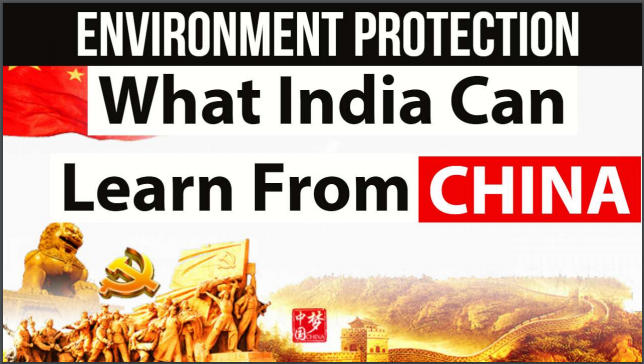Table of Contents
BASICS
On October 18, 2017, China’s President Xi Jinping delivered a historic speech at the Chinese Communist Party’s 19th Congress.
The speech emphasized the growing connections between humans and nature.
Xi Jinping’s regime has identified “three critical battles” that it must win by the year 2020 – against pollution, financial risk and poverty.
4 YEARS AFTER THE WAR
• The Energy Policy Institute at the University of Chicago set out to answer the question and found that in China’s most populated areas, the improvements in air quality have been
“remarkable”.
• The plan called for a four-pronged attack: reduce dependency on coal, control vehicle emissions, generate more renewable energy and enforce emissions standards. The government also widened its air quality monitoring network and released the data to the public.
NOTE
India to tie up with US and Finland to jointly develop new pollution-forecast system
The Ministry of Earth Sciences (MoES) is tying up with US and Finland to develop new pollution-forecast system that will help anticipate particulate matter (PM) levels at least two days in advance and at greater resolution.
• Currently, System of Air Quality and Weather Forecasting and Research (SAFAR), run out of Indian Institute of Tropical Meteorology (IITM), Pune, serves as apex forecaster of
pollution trends in Delhi, Mumbai, Pune and Ahmedabad.
• It generates likely air quality profile for a day in advance, for these cities. SAFAR monitors pollutants like PM1, PM2.5, PM10, NOx (NO, NO2), CO, Ozone, SO2, BC, Methane (CH4), Non methane hydrocarbons (NMHC), Benzene, VOC’s, Mercury.
IN JUST THE PAST FIVE YEARS

• China has brought out three key umbrella reforms – Air Ten (2013), Water Ten (April, 2015), and Soil Ten (2016).
• By contrast, the latest Indian environmental policy move of a similar type is the National Green Tribunal Act (NGT, 2010). Other environmental reforms date back many years: The Environmental Protection Act (1986), and the Air (1981) and Water (1974) Prevention and
Control of Pollution Acts.
PREVENTION OF WATER POLLUTION IN CHINA
• China’s 13th Five Year Plan (2016-20) aims to establish unit based management of water resource quality.
• This should ensure priority protection of good-quality water bodies, improving water quality at both urban and river deltas and near-shore areas.
• Supporting this endeavor, a revised Water Pollution Prevention and Control Law was introduced earlier this year.
WATER POLLUTION PREVENTION AND CONTROL LAW
• Under this law, party and government leaders are made responsible for addressing water pollution, including resource protection, waterline management and ecological restoration.
• The new law will fine those who fail to comply, reaching even up to RMB one million. For severe violations, shutdowns and criminal punishment can also be imposed. The law requires
enterprises to monitor water pollutants and on failure to comply, can face penalties of up to RMB 200,000.
RIVER CHIEF RIVER POLLUTION IN INDIA
A report by the Central Pollution Control Board (CPCB) indicated that between 2009
and 2015, out of the total 445 rivers monitored by the Board, the number of polluted rivers
increased from 121 to 279.
CHINA’S ENVIRONMENTAL PROTECTION LAW
•Under the latest Environmental Protection Law (EPL, 2015), five key pollution control measures
are outlined: daily fines towards offenders; seizure of polluting equipment and/or facilities; orders to limit or halt production in case of excessive pollution .
VERTICAL GARDENS RAINWATER USE
•These gardens use rainwater captured on the elevated highway and at ground level, to keep the 500,000 plants of the vertical garden, green. They suck more than 27,000 tons of polluting gases annually from the environment.
•They produce annually enough oxygen for 25,000 persons. And, they capture more than 11,000 tons of dust. The greenery has also taken stress off commuters.
























 WhatsApp
WhatsApp